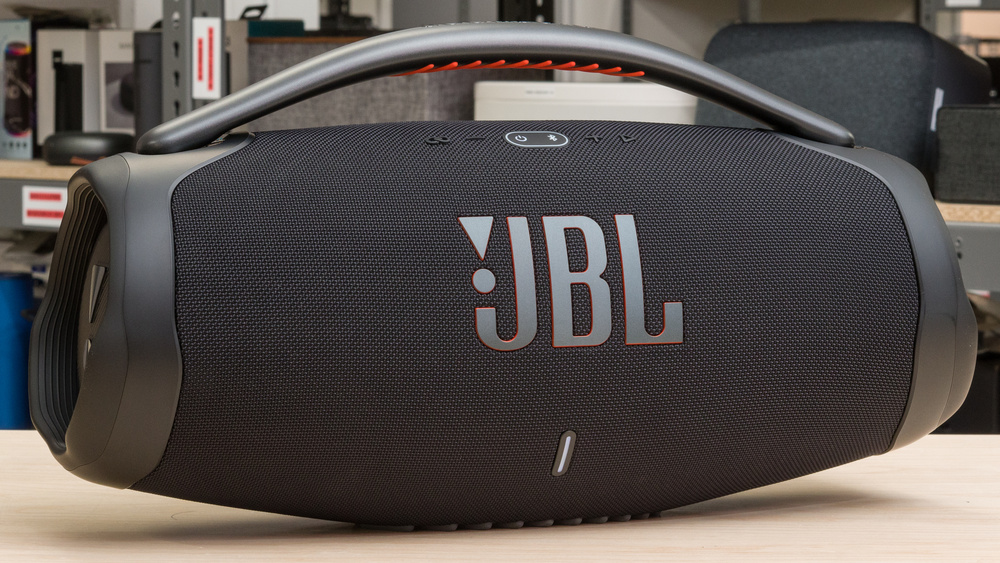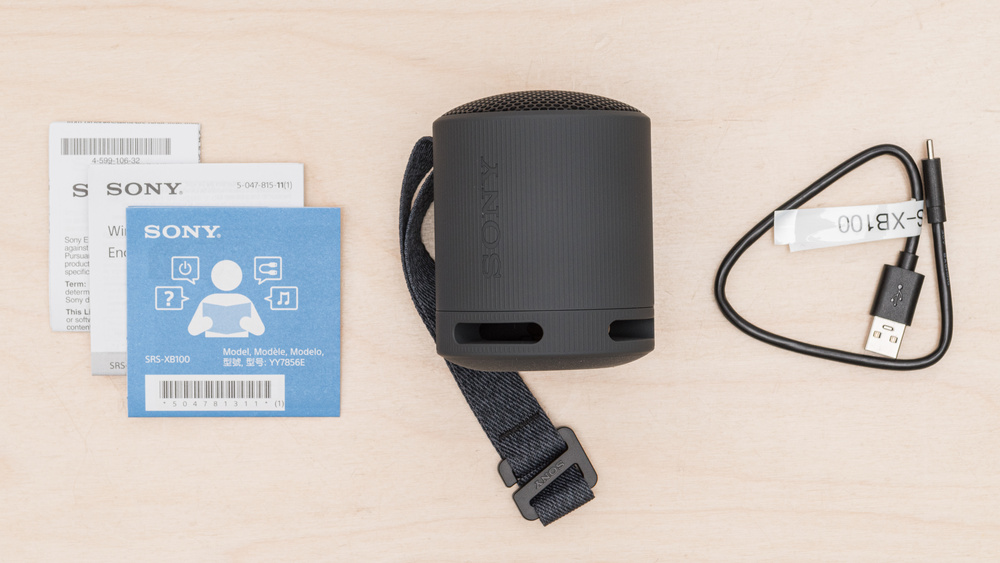- 70.0%Battery Life
- 15.0%Charge Time
- 15.0%Power Saving
Battery performance is an important factor to consider when buying a speaker. Depending on your needs, you may want a speaker that can last a long time between charges. This feature can allow you to enjoy lengthy outdoor listening sessions, move your speaker around the house freely, or simply not worry about running out of battery mid-podcast. You may also want a speaker with a power-saving feature that turns off after some time without audio playing. This mode helps conserve the speaker's battery and means you won't need to remember to turn the speaker off yourself.
Some speakers don't have a battery, especially those designed for home use. Instead, they have a wired design, so they must be plugged in while in use. However, speakers that are versatile or designed for outdoor use will likely have a battery. We test four aspects of a speaker's battery performance: battery life, charging time, power-saving features, and the charging port type. These factors can help you find a speaker best suited to your needs.
Test results
When It Matters
A speaker's battery performance matters if you want to listen to audio content without keeping your speaker plugged in. You may want to play music around the house, in your backyard, or on a camping trip. Again, some speakers don't have a battery, so you'll need to connect these wired options to power to use them, limiting their portability. That said, there's plenty of variety in wireless speakers, giving you many options for enjoying music, podcasts, and other audio content wherever you are. Depending on how you intend to use your speaker, you may find battery efficiency more or less important than other components. For example, if you like taking your speaker outside for extended periods, you may want one with a lengthy battery life. However, larger speakers tend to have bigger batteries, which can result in extended playtime compared to smaller, more compact models, so you might need to compromise between battery life and overall portability. You might also consider a speaker with a power-saving feature if you don't want to worry about turning it off after each use. Overall, battery performance is important for many users, especially if you like to use your speaker outside.
Our Tests
To test a speaker's battery performance, we look at four factors: battery life, charge time, power-saving features, and charging port. Battery life is the largest factor in a speaker's overall battery score since users want to listen for long sessions without recharging, and it can vary significantly. We've tested speakers that last anywhere from just over four hours to an impressive time of nearly 118 hours. A speaker's charge time and the presence of a power-saving feature factor significantly lower in the overall battery score, as they're less impactful (but still important!). Furthermore, the longer a speaker's battery life is, the longer it takes to charge. We consider this when weighing the battery score so that speakers with very long run times aren't unfairly penalized for taking longer to charge. A speaker's charging port variety doesn't factor into its battery score since it doesn't meaningfully affect the user experience.
It's important to note that we only perform these tests on battery-powered speakers. Some speakers, like the Amazon Echo Gen 4, don't have a battery and need to be plugged in to be used. For battery-powered speakers, these tests can give you helpful information about the speaker's battery performance.
Battery Life
A speaker's battery life is the largest factor in its overall battery performance. If you like using your speaker outside or even just around the house, it's nice to know it won't run out of charge too quickly. This aspect is especially important if you're on the move since you may not have access to an outlet.
To test a speaker's battery life, we make sure it has the latest firmware and fully charge it. Then, we set an audio track to play on a loop at a sound pressure level of 80 dB from one meter away. We measure how long it takes for the speaker to run out of charge while playing the audio track, which gives us its battery life. We consider a good value to be nine hours, which should be enough for long listening sessions outside. However, some speakers can last far longer, like the JBL Boombox 3, which offers almost 30 hours of continuous playback.

If a speaker's advertised battery life differs greatly from our test results, we may test it again. For example, the manufacturer advertises the Bose Portable Smart Speaker as having a twelve-hour battery life, but in both our tests, it only lasted around five hours. Conversely, the Pohopa EF-B210G speakers are advertised as having a fifteen-hour battery life, but they lasted over 60 hours in each of our tests.
It's important to note that a speaker's battery life may vary depending on usage. If you use it at max volume, your speaker will likely run out of charge faster than in our tests. Conversely, if you play audio quietly, it may last longer. Other features also factor into this; if you connect multiple devices, activate RGB lighting, or neglect to keep your speaker's firmware updated, you may find that the battery drains more quickly. It's important to note that rechargeable batteries also degrade over time, so your speaker's run time will decrease over the battery's lifespan.
Charge Time
A speaker's charge time is important when you want to charge your speaker before taking it on the go. It's useful if a speaker can charge quickly, so you don't have to wait too long before using it, especially if the battery life isn't particularly extensive. To test a speaker's charge time, we let the battery fully empty and then plug it in using the provided charging cable. We record how long it takes for the speaker's battery to become full. Some speakers, like the Sony SRS-XB13, have a light that indicates when the battery is low, charging, and full, while others have an audio indicator for the battery's charge level. A few speakers, like the Sonos Move 2, only indicate the battery status using their companion app.
We consider <2 hours to be a good charging time for speakers. For example, the Harman/Kardon Go + Play 3 takes just two hours to fully charge from an empty battery. Most speakers we've tested take longer than two hours to charge fully, though if you allow enough time to charge your speaker before taking it out and about, there shouldn't be an issue.
Power Saving
Power-saving features are useful since they conserve a speaker's battery, giving you more playtime before recharging is required. Most speakers with a power-saving feature automatically turn off after being idle for 15 minutes, but some, like the JBL Go 4, turn off after 20 minutes without audio input. We only test a speaker's power-saving feature if it's advertised to have one, and we only test to confirm the presence of its advertised feature. To test this, we turn on the speaker, connect a phone, and ensure no audio is playing. We check back on the speaker in 15 minutes, and if it's turned off or entered its advertised power-saving mode, this confirms the presence of a power-saving feature.
If a speaker doesn't have a power-saving feature, you'll have to remember to turn it off manually. If the speaker remains on for an extended period, it can drain the battery. Fortunately, most speakers with a built-in battery come with a power-saving feature.
Charging Port
Battery-powered speakers come with different types of charging ports. The speakers we've tested have included AC, DC, Lightning, Micro-USB, and USB-C ports, but you may encounter different types of charging ports in other models. We test this by checking the speaker's physical charging port and identifying its type. In our tests, USB-C (including USB-A to USB-C, pictured below) is the most common variety of charging cable.

A speaker's charging port variety may be important to you if you have extra charging cables at home that you wish to use. That said, battery-powered speakers generally come with their respective charging cable, so there shouldn't be an issue if you don't lose it.
Conclusion
A speaker's battery performance is important if you want to listen to music or podcasts outdoors or in different rooms throughout your house. If you don't want to worry about frequently charging your speaker, you may want one with a long battery life. You may want a model with a power-saving feature if you don't want to worry about shutting it off after each use. While a speaker's battery performance may be more important to some users than others, it's worth considering when deciding which speaker best suits your needs.